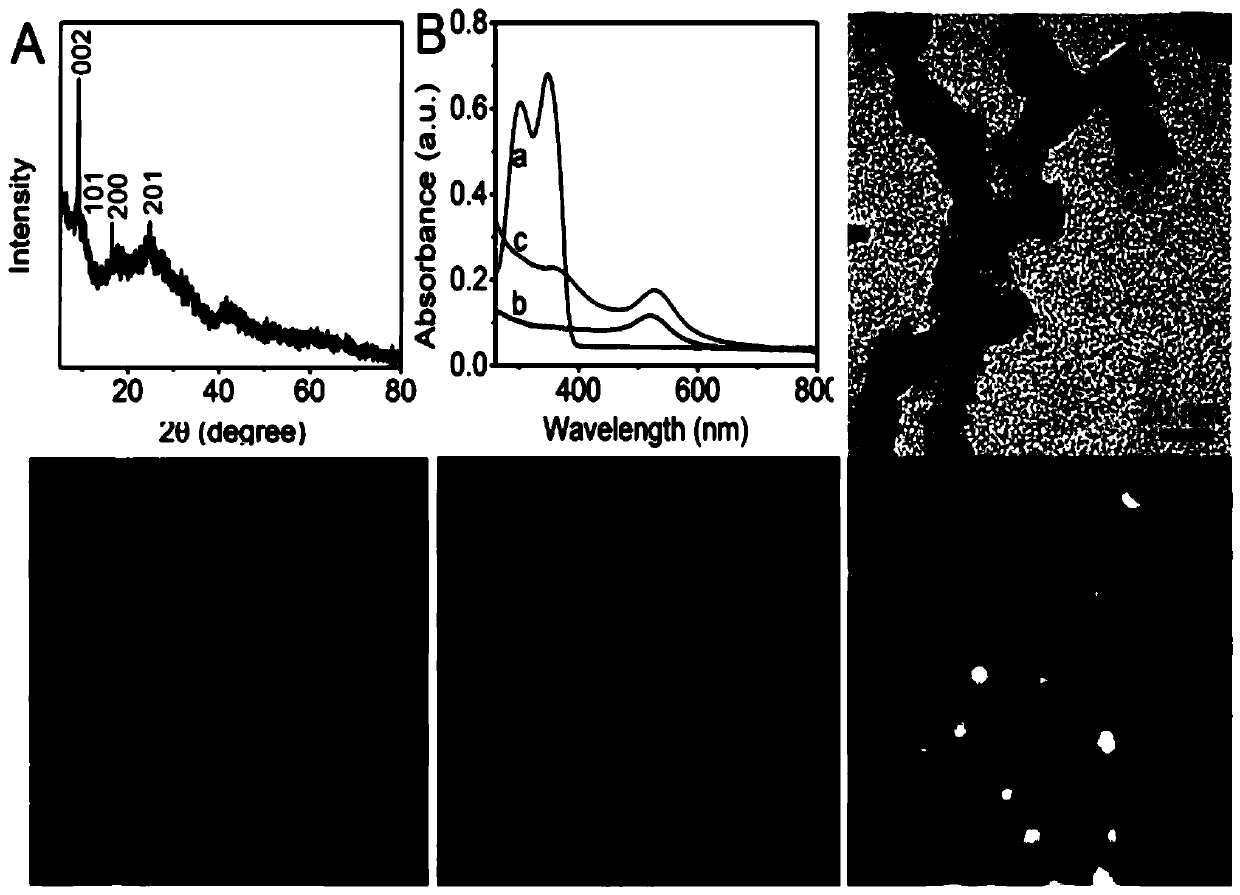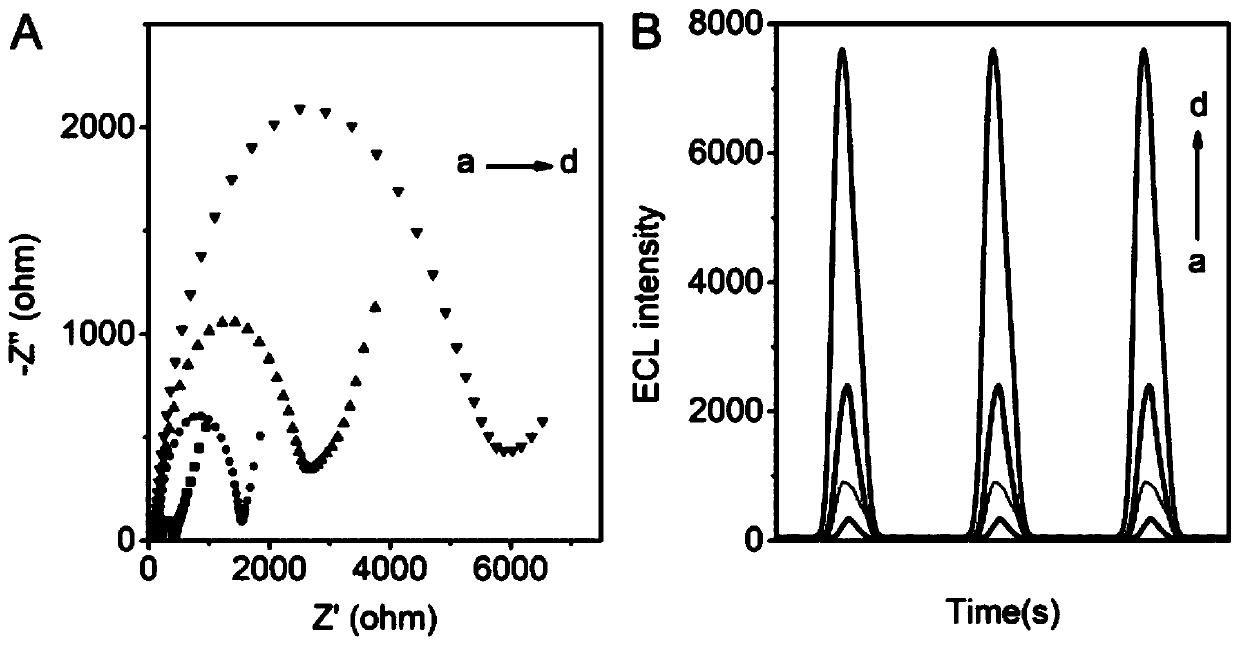Electrochemical luminescent biosensor, preparation method and application of electrochemical luminescent biosensor to detection of base excision repair enzyme
A luminescent biological and electrochemical technology, applied in the fields of electrochemical variables of materials, scientific instruments, instruments, etc., can solve the problems of high preparation, purification and storage costs, inhibition of catalytic activity, and variability, and achieve a wide range of potential applications and high sensitivity. , the effect of simplifying the operation procedure
- Summary
- Abstract
- Description
- Claims
- Application Information
AI Technical Summary
Problems solved by technology
Method used
Image
Examples
preparation example Construction
[0047] In yet another specific embodiment of the present invention, a method for preparing the above-mentioned electrochemiluminescent biosensor for detecting base excision repair enzymes is provided, the preparation method comprising:
[0048] (1) Preparation of β-CD / GO / GCE electrode: GO solution was added dropwise on the surface of GCE to obtain GO / GCE; after drying, β-CD solution was added dropwise onto GO / GCE to obtain β-CD / GO / GCE electrodes;
[0049] (2) Preparation of FeMOF / AuNPs@luminol-Hairpin probe: Mix FeMOF and AuNPs@luminol to obtain FeMOF / AuNPs@luminol, then mix and incubate FeMOF / AuNPs@luminol with hairpin probe solution, and centrifuge to obtain .
[0050] In yet another specific embodiment of the present invention, the concentration of the β-CD solution is 1 to 5 mM (preferably 2 mM); it has been verified by experiments that when the concentration of the β-CD solution is 2 mM, the luminous intensity is the highest and the detection effect is the best. good. ...
Embodiment
[0072] The principle of this embodiment, such as figure 1 Shown:
[0073] A hairpin probe with 6 uracil bases in the stem, a sulfhydryl group at the 5' end was designed for immobilization on the surface of FeMOF / AuNPs@luminol, and an Fc at the 3' end. In the absence of UDG, the six uracil bases of the hairpin probe could not be deleted, and the FeMOF / AuNPs@luminol-hairpin probe could not be captured to the electrode surface by β-CD, resulting in no Prussian blue production. Due to the absence of Fc and Prussian blue on the electrodes, the ECL luminescence intensity is lower. When UDG exists, 6 uracil bases in the hairpin DNA are removed, and 6 AP sites are generated, forming a straight single-stranded DNA (ssDNA) with Fc at the 3' end. Fc is immobilized on the electrode through the host-guest interaction with β-CD to further catalyze luminol free radicals (L -· ) and H 2 o 2 generated OH · The reaction produces 3-carbamate (AP 2- *). When AP 2- *When returning to the ...
PUM
 Login to View More
Login to View More Abstract
Description
Claims
Application Information
 Login to View More
Login to View More - R&D
- Intellectual Property
- Life Sciences
- Materials
- Tech Scout
- Unparalleled Data Quality
- Higher Quality Content
- 60% Fewer Hallucinations
Browse by: Latest US Patents, China's latest patents, Technical Efficacy Thesaurus, Application Domain, Technology Topic, Popular Technical Reports.
© 2025 PatSnap. All rights reserved.Legal|Privacy policy|Modern Slavery Act Transparency Statement|Sitemap|About US| Contact US: help@patsnap.com



